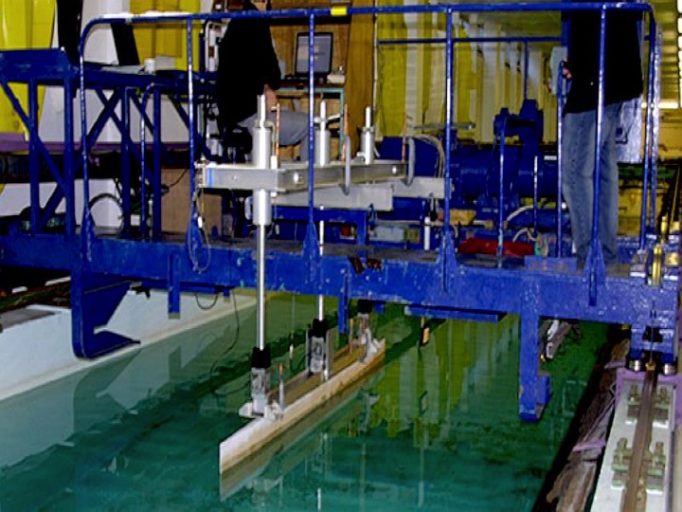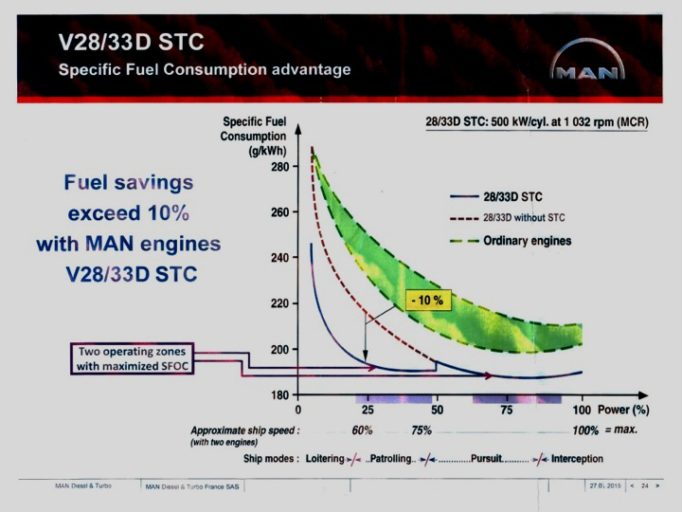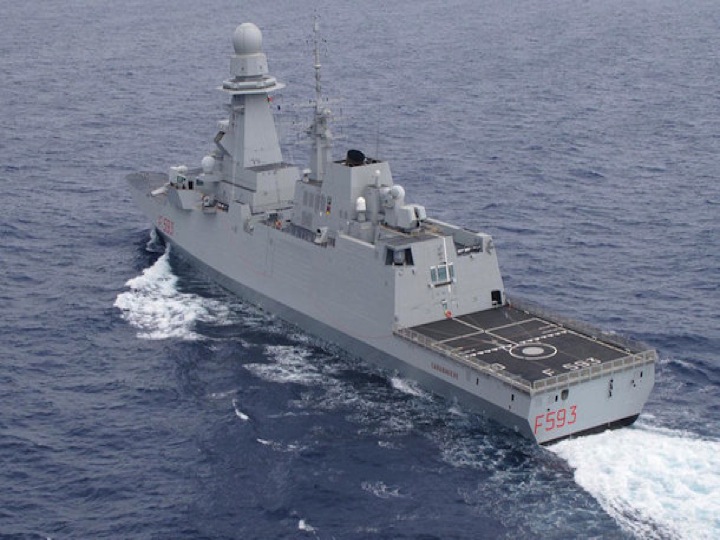INTRODUCTION
Ship acquisition program is a very sensitive issue, thus the choice of a proven design warship tops the list. The cost of Frigate acquisition is very prohibitive that it requires a careful evaluation and analysis of the Ship Systems Work Breakdown Structures (SSWBS), an itemized cost distribution of various components of the ship versus the desired requirements and capability engineered to suit the doctrine requirements of a Navy. This article attempts to enumerate and discuss the criteria that would make up a Frigate with proven design. This is the second of 12 articles on operability and combat effectiveness of a Frigate.
PROVEN DESIGN
A pedigree of ship design where all the aspects of design consideration have the background for a proven design vessel that possesses the combat reputation performance of an existing warship that has been tested in battle, and has survived the test of the time. The ultimate proof of any warship built for naval purposes is actually gained in actual combat or similar simulated situation.
The following discussion will describe in more detail the criteria that should be taken into consideration when assessing the risks through the levels of design in any given warship proposal for acquisition.
- The hull form must be within plus or minus 15% of the length waterline, which is the true length of the ship, or a minimum 10% of the length to breadth ratio. The design must have been tested as a model at the resistance tank testing stage.
The block, prismatic, area of waterplane, midship coefficient, center of floatation, longitudinal center of buoyancy displacement, etc. would also have to be within 0.05 of those of the previous form for the new hull to be regarded as “proven.”

Figure 1. Tank Testing Basin with Scaled Ship Model
The tank testing of the scaled ship model of the ship design in question must display in the tank test the aspects of performance such as ideal and acceptable minimal resistance, bow wave, stability, seakeeping, etc., in order to have an accurate prediction and integrate the findings to the actual ship to be constructed. This is how British Naval Architect William Froude and US Navy Admiral Taylor devised the time-honored practice in ship design in order to avert costly and embarrassing mistakes. This method is now adopted worldwide by reputable ship designers/shipbuilders through the International Standard of Tank Test Conference (ITTC)
- Structural Framing System. The keel, frames, platings, stiffeners, etc. must be within plus or minus 15% of the overall structural design philosophy and validated for strength by an independent authority (ministry of defense ship design study) through a classification society and which also validates practicability of a ship built by a shipyard. In principle, the structural philosophy is defined as being “very close” to the original mothership design of the same class of warship.
Design load and strength criteria must be taken from the same code (that some of these will, by code, be dependent on length or some areas of operation and climatic condition) and same materials should be used, in general, in the same quality and grade of steel.
- Propulsion System. The design and selection of a propulsion system must be based on how we are going to utilize the system by establishing an operating profile based on doctrine in ship operation that needs to be established beforehand. These questions must be asked: Why CODOG, CODAG, CODLAG or COGOG? Why do we need top speed of 24 knots MCR for a 24-hour speed, when speed is relatively very expensive? What is the total patrol area in square miles of our Areas of Responsibility (AOR)? How many square miles do we want to accomplish per patrol deployment? What is the distance of patrol area from point A to point B? Speed is a function of time and distance, and it consumes resources such as fuel, a very valuable commodity in any shipping operation.

Figure 2. Main Propulsion System Operating Profile
The engine is the heart of a warship. Running at full speed means a maximum load factor is imposed on the engine. The engine would not last long at such constant pressure and would lead to undue stress to the internal combustion plant. A variable speed such as 20% maneuvering loitering, 70% transit/patrol and 10% interception by percentage allocation of maximum load factor of the engine brake horse power at a given period of the patrol time will naturally attain the Mean Time Between Overhaul (MTBO) of the engine’s life of 12,000 hours.
The choice of propulsion plant equipment and accessories must be based from a proven series of engine that can suit the ratings of the ship operation profile. The shipbuilder should have experience in the specification and selection of all components of the propulsion train such as the propellers, gearboxes, control system, etc. and these should be specifically drawn from experience of equipment in service and in similarly of almost the same displacement of warship designed for operation in a similar environment. Various ship signature threshold such as noise, vibration, electromagnetic signature threshold, shock, water-tightness and blast must be taken into consideration seriously.
- Combat Systems Requirements. The choice of weapon primarily reflects on the operational requirements, which must be threat-driven, and the weapons should actually be in service, at the equipment modification state, or a version in a proven warship. The weapons layered defense, priority of weapons utilization by the Order of Battle (ORBAT), must be clearly outlined and identified, the characteristics and lethality of a threat is a must to achieve a high degree of success to defeat the threat either by hardkill or softkill.
- The Electro Magnetic Spectrum. Evaluation and analysis of the electromagnetic signature threshold of the Frigate must be also given priority for this will determine the effectiveness of the countermeasure either by decoy, seduction or distraction in order to avoid being lock-on, when hit by ordnance munitions with electronic guidance system (active, passive and beam riding guidance system). In a modern war at sea, Electronic warface capability is a necessity.
- Repair, Maintenance and Operating Cost. An analysis of the budgetary requirement to maintain the availability and readiness of a battleworthy Frigate must be within the range of budgetary expenditures with almost identical doctrine in warfighting.
- Seakeeping Performance Index (SPI). Determination of the ship SPI will predict various seastate conditions and avoid the SPI Limitation wherein the ship will encounter functionality degradation and still achieve minimum degradation by changing course to a suitable heading.
- Electrical Power Demand. The percentage demand factor both for continuous and intermittent power load must be as low as possible, supplying power requirements during normal patrol run, maneuvering during entering and leaving the harbor, dock at port, helicopter operations, use of combat systems and sensors, surveillance, etc. This will contribute drastically to fuel economy of operations.
- Survivability. This is the key element in Frigate design. Floodable length that even if the ship is flooded with seawater, she has sufficient buoyancy and flotation to remain under damage condition at the surface of the sea. The ship must be able to stop the spread of damage incurred from being struck by weapons ordnance, and protect its crew and vital equipment from damage. She must be designed and equipped with system and sub-system redundancy by duplication, separation and segmentation to provide basic utility services during extremely hazardous situations.
CIRCULAR OF REQUIREMENTS
The Circular of Requirements (COR) is derived from the Frigate Warfighting Doctrine that would identify the capability and performance we need. This is a product of a war-gaming process, which is threat-driven so that the Frigate would have the right capability to defend and strike against hostile forces at sea. The COR is the responsibility of a Navy based on a doctrine prepared beforehand. The Navy must concentrate on the formulation of the doctrine, which is their core competence, rather than focusing attention on technical specification, which is the work of the ship designer/shipbuilder. Ship acquisition through the Warfighting Doctrine is the accountability of the Navy to the Filipino people.
TECHNICAL SPECIFICATIONS
Technical Specifications is the duty and responsibility of the ship designer/shipbuilder. This is the product of their scientific and engineering approach such as tank testing/ship modeling, calculation on stability, strength of materials, electrical engineering, signature threshold analysis, speed and power, economy of operation, survivability, operability, trim, moment distributions, stress concentration, quality control, weapons engineering, cost trade of analysis, etc. thus the Navy should not share the responsibilities with the designer/shipbuilder, as those tasks are their responsibilities and what they are essentially paid to do. The end product of this effort is performance and capability that would be in compliance with the COR of a Navy.
CONCLUSION
A warship is the largest manmade vehicle ever created that operates on a very complex hostile environment. She must be perfectly designed in order to operate independently to assert influence at sea.
A ship with a proven design is identical to a designed and built ship engineered to suit exactly the Warfighting Doctrine of a particular Navy. There will be some design flaw but they must be within tolerable limits. If the flaws are obvious especially on ship performance, then she will have that bad performance reputation throughout her serviceable lifetime in the fleet, which is very costly and sheds doubtful capability in combat. Ship acquisition cost is very prohibitive that we must do it right the first time in order not to waste the Taxpayer’s money.
The absence of a Doctrine of a warship will make a Navy blind to what it really intends to possess to carryout her mission effectively, as well as to what concept it is really heading for, to obtain the ship we intend to acquire for our national security. A WARSHIP IS A NATIONAL INVESTMENT.
RECOMMENDATION
It is not enough that a Frigate used by one or two countries Navy will answer the proven design warship. This can mislead us. We must scrutinize diligently what we are looking for in a ship suited to our needs. The foregoing discussion enumerated in this article can be tools of ship selection management that can lead us to a proven design warship.
It is recommended that the existing AFP modernization law on proven design be reviewed for inclusion of the parameters of ship acquisition and technical selection. Implementing rules and parameters mitigate the levels of technical and financial risks of the project.
These are just some basic but important information that I can share on ship acquisition program of the government.
REFERENCES:
- DERA UK Defense Evaluation Research Agency of Great Britain
- Yarrow Shipyard United Kingdom of Great Britain – Proven Design Ship
- MAN Diesel Engine brochures
- www.royalnavy.mod.uk/the-equipment/ships/frigates/type-23-frigate
- Model Testing – MARIN
